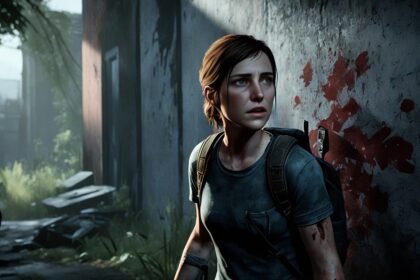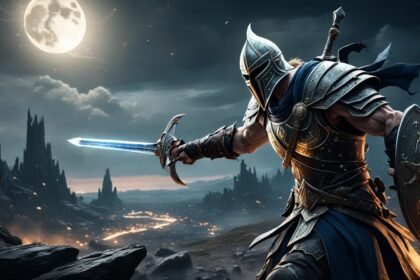Witness for the Prosecution is not just any court drama. It’s a mix of mystery and thrill, reaching out to everyone. This story, by Agatha Christie, pulls us into the ups and downs of a court case.
Key Takeaways:
- Agatha Christie’s short story “Witness for the Prosecution” is the foundation for this captivating courtroom drama and legal thriller.
- The film adaptation, released in 1957, featured a stellar cast, including Charles Laughton, Marlene Dietrich, and Tyrone Power.
- Elsa Lanchester, Charles Laughton’s wife, added a new character named Miss Plimsoll to the film adaptation.
- Billy Wilder directed the acclaimed 1957 film adaptation, which included a triple twist in the ending.
- Lucy Bailey, known for her critically-acclaimed productions, directed a site-specific production of Agatha Christie’s Witness for the Prosecution at London County Hall’s Council Chamber.
- The play is set in post-war London and explores themes of truth, justice, prejudice, class, and women’s role in society.
- The venue’s unique layout offers audience members the opportunity to sit in the jurors’ box or the old press gallery, enhancing their immersive experience.
- Agatha Christie’s influence on modern crime writing is undeniable, and Witness for the Prosecution showcases her mastery of atmospheric storytelling.
- Audiences have responded positively to the venue, atmosphere, and play, earning Witness for the Prosecution a place on the short list for best touring production at the UK Theatre Awards 2018.
Agatha Christie’s Story and Play Adaptation
Agatha Christie, the famous mystery writer, penned an engaging short story. This story later inspired her play, Witness for the Prosecution. It first appeared in 1925 as ‘Traitor Hands’ in Flynn’s Weekly. It’s about Leonard Vole, a standout character, suspected of a crime he might not have committed.
Agatha Christie’s story became popular, leading her to turn it into a play. In October 1953, Witness for the Prosecution started at London’s Winter Garden Theatre. The play’s courtroom drama kept everyone on the edge of their seats. Christie tweaked the characters and added a surprising ending to really grab the audience’s attention.
The play changed Christie’s career in 1954. It was a part of a trio of her plays showing in London’s West End at the same time. No other woman had done this before. It solidified Christie’s role as a suspense and mystery master.
| Year | Adaptation | Notable Cast |
|---|---|---|
| 1957 | American Film Version | Tyrone Power, Marlene Dietrich, Charles Laughton |
| 1982 | TV Adaptation | Beau Bridges, Diana Rigg |
| 2002 | Russian Language Version | N/A |
| 2011 | Japanese Version | N/A |
Through the years, Witness for the Prosecution has been brought to life in many languages. It keeps drawing in fans all over the world. Christie’s spellbinding story and memorable characters ensure the play’s lasting appeal.
Billy Wilder’s Film Adaptation
In 1957, Billy Wilder directed the film version of Witness for the Prosecution. This film took Agatha Christie’s thrilling courtroom story to new heights. It starred great actors like Charles Laughton and Marlene Dietrich, really bringing the story to life.
The movie had a $2 million budget but made $9 million around the world. It was the top-grossing film in America for two weeks straight in early 1958. This success showed how much people loved and talked about it.
It got six nominations for the Academy Awards because of its excellence. Elsa Lanchester even won a Golden Globe for her part in the film. This shows how much critics and the public both liked the movie.
Witness for the Prosecution was named the sixth-best courtroom drama ever by the American Film Institute. This is a big honor, showing the movie’s lasting influence on cinema.
On Rotten Tomatoes, the film has a rare perfect score of 100%. It’s based on 40 reviews and an average score of 8.7 out of 10. And on IMDb, it gets an 8.4 out of 10, making it a true classic loved by many.
The film remains popular because it has a high IMDb Popularity score of 3,231. It also has great reviews by both viewers and critics, along with a Metascore of 76. This is a strong sign of its wide appeal.
On top of all that, Witness for the Prosecution is ranked 66 on IMDb, showing its high regard among fans. This positions it as a key work in movie history.
Table: Top Cast and Similar Movies:
| Top Cast | Similar Movies |
|---|---|
| Tyrone Power | Sunset Boulevard |
| Marlene Dietrich | The Apartment |
| Charles Laughton | Paths of Glory |
Billy Wilder’s version of Witness for the Prosecution is a standout in film history. It has won the hearts of many with its great storytelling and acting. Its recognition as a top movie stands strong over time, making it one of the best ever.
The Challenges of Adapting a Short Story
Turning a short story into a movie or show is tough. It’s hard because there’s not a lot of content to work with. This is especially true for “The Witness for the Prosecution.” It’s only twenty pages long. You’ve got to figure out how to stretch the story without losing its heart.
You need to explore the small stuff in the original story. Like, a character’s dry cough can become a big deal. This lets you create a richer world. Adapting becomes a mix of creativity and making up stuff. It helps the story get more interesting and detailed.
“The Witness for the Prosecution” also faces its own issues. It’s set just after World War I. The time was hard for many, with lots of poverty and joblessness. The 1920s were a mix of fancy living and rough times for most people.
The challenge is to make this post-war struggle real. The adaptation has to show why someone might do something extreme, like murder. Adding in the historical background helps show why the characters act the way they do.
Adapting stories has problems, but it’s also a chance to be creative. Through this, works like “The Witness for the Prosecution” can become fresh and interesting. They will hook viewers with their great characters and themes.
Statistical Data on the Challenges of Adapting “The Witness for the Prosecution”
| Challenge | Solution |
|---|---|
| The short story is only about twenty pages long | Expand on tiny details and flesh out the narrative |
| Adapting the story involves expanding on tiny details mentioned | Build a more comprehensive world and add depth |
| The story was written approximately five or six years after World War I | Incorporate historical context to reflect post-war struggles |
| The majority of people coming out of World War I were impoverished | Showcase the challenges of unemployment and poverty |
| The 1920s setting reflects a mix of glamour and hardship | Create a realistic world with contrasting circumstances |
| The adaptation aims to capture the essence of post-World War I struggles | Show the impact of historical context on characters’ motives |
The Impact of World War I on the Story
In Witness for the Prosecution, 1920s London is shaped by the aftermath of World War I. As the characters deal with post-war depression and societal norms, you see the story change. It dives into how the war affected both people and society as a whole.
The story takes place in 1923, when the war’s impacts were still fresh. This time was marked by the war’s lingering shadow. The plot shows a society struggling with the war’s memory and its effects on everyone.
By 1923, people were just starting to understand the war’s scope. They were facing the true costs and losses of the conflict. Witness for the Prosecution captures this period of grasping with the war’s consequences.
The war’s effects were widespread, even hitting people close to home. John Mayhew, the main character, is a solicitor facing hard times. His struggles show the economic downturn and desolation post-war society faces.
John’s relationship with Alice, his wife, underlines the story’s theme of personal struggle. Their marriage is shown as troubled and bleak. It reflects the hardships many faced, emotionally and financially, after the war.
Witness for the Prosecution paints a picture of a society at its breaking point. It’s a world dealing with loss, attempting to rebuild. The story is not just about a crime case; it’s about finding hope and justice in a wounded, post-war environment.
Characters and Their Comeuppance
In “Witness for the Prosecution,” each character faces their own comeuppance. This shows the consequences of their actions and the pursuit of justice. The accused, Leonard Vole, must face his real self and his decisions. His wife, Romaine, manipulates to save him but ends up punished. Mayherne, the defense, feels guilty about the trial. Emily French, the victim, meets a sad end because of her own wants.
“Witness for the Prosecution” has many versions, showing varied ideas about justice. The radio version leaves justice unfulfilled, leaving ending matters unclear. This version’s quick pace and music make the story thrilling. Sound effects like birdsong and sirens add another layer to the story.
The film, though, shows Leonard and Christine facing justice right in the courtroom. Christine’s stabbing of Leonard shows the costs of their actions. The film explores the legal system’s weaknesses. Leonard’s acquittal shows that lies can influence justice.
The TV version stands out by letting Leonard and Romaine go free. Meanwhile, Janet McKenzie is wrongly convicted and hanged. This adaptation explores modern sexual politics. It highlights passion and power games. It also delves into how class affects relationships, adding depth to the characters.
Character Adaptations and Their Consequences:
| Character | Adaptation | Comeuppance |
|---|---|---|
| Leonard Vole | Radio, Film, TV | Confronting true nature and consequences of actions |
| Romaine | Radio, Film, TV | Manipulating the legal system and facing personal punishment |
| Mayherne | Radio, Film, TV | Grapples with guilt over role in the trial |
| Emily French | Radio, Film | Meets a tragic end due to her own desires |
The characters in “Witness for the Prosecution” mirror real human nature. They show the results of greed, lies, and betrayal. Through their stories, the film unravels the complex web of justice and morality. It shows the hefty price of wrong choices.
Gender and Class Dynamics
In Witness for the Prosecution, the story takes us to 1920s London. It shows the impact of gender and class. We explore how these build the worlds of the characters.
The female characters show us how they fight against society’s rules. They push back on the strict roles expected of them in a male-dominated world. Their stories highlight the struggle for freedom and autonomy.
The tale also contrasts the lives of the rich and the working class. It reveals the advantages of high social standing. But it also sheds light on the difficulties of those with less.
The core themes in the story go deep. They make us think about the rules and pressures that govern lives. It’s a call to examine the power imbalance in our own world.
Depiction in Adaptations
Witness for the Prosecution has seen many forms, like radio and TV. Each version tackles the themes of gender and class in its unique way.
The TV version focused on today’s gender topics. It showed how gender affects power and leads to unfair treatment. This shed light on gender equality issues.
The different endings across these works are interesting. The short story and radio suggest that justice might not prevail. Yet, the film and TV adaptations opt for a different, harsher stance. This shows how we view justice regarding social class and gender.
The Enduring Figure of Romaine Vole
Romaine Vole is a key figure in the story. She embodies society’s biases on gender, class, and even where someone is from.
Actresses like Marlene Dietrich and Diana Rigg have taken on the role. Their unique portrayals show Romaine’s deep, lasting impact.
Kristen Heider played Romaine in one version, bringing her own touch. Her German accent adds to Romaine’s mystique.
Romaine’s character makes us rethink our biases. She stands as a symbol of the issues around gender and class. Her story is a powerful look at these topics.
Sarah Phelps’ TV Adaptation
Sarah Phelps brings Agatha Christie’s “Witness for the Prosecution” to life in a TV series. She puts a modern twist on the classic tale. Her work turns a 1925 short story into a suspenseful two-part drama.
After the success of “And Then There Were None,” the BBC asked Phelps to work on this project. The earlier show drew over 8 million viewers and won praise. This led to big expectations for “Witness for the Prosecution.”
Phelps worked with top names like Mammoth Screen and Agatha Christie Productions. Their collaboration created a series that’s both visually stunning and well-told.
“Witness for the Prosecution” combines suspense and courtroom drama in 1920s London. Phelps explores themes like deceit and love, making a rich story.
The story begins with a murder in a London home. Leonard Vole is accused of killing Emily French, a wealthy woman. The story unfolds in a way that keeps viewers guessing.
Director Julian Jarrold brings Phelps’s vision to life. He’s praised for his skill in making stories come alive on screen.
The tale is set after World War I, which adds darkness and complexity. The time period’s context shapes the characters and the story. Phelps weaves these elements into a detailed adaptation.
Critics loved “Witness for the Prosecution.” They praised the story, the cast, and visuals. The show fared well with viewers, earning a 7.0/10 on IMDb.
Phelps’s work is a hit with Christie fans and new viewers. The show’s pace and cinematography create a suspenseful experience. It’s a top choice for those who love crime dramas.
The Impact of Leonard and Romaine’s Relationship
In Witness for the Prosecution, Leonard and Romaine’s bond is central. This story shows a complex mix of manipulation, power plays, and bad choices. The way their relationship is shown in different versions sheds light on our darker sides.
The 2004 radio piece uses sound effects, making the story come alive. The sounds of birds add a layer of suspense. Listeners can feel the tension between Leonard and Romaine as the story progresses.
In the TV version, Romaine’s role shines a light on gender issues. It’s notable for the number of important women, showing diverse experiences. This adds depth to the story’s gender themes.
Various adaptations show Leonard and Romaine differently. This uniqueness offers a rich look at their characters. It deepens the story, covering a wide range of moral challenges.
“The relationship between Leonard and Romaine in Witness for the Prosecution is like a chess game, with each move calculated and designed to gain the upper hand.” – Adaptation Comparison Expert
The depiction of class in different adaptations adds intrigue. It highlights society’s power structures. This contrasts characters’ choices and actions based on their social positions.
The post-World War I setting makes characters’ choices more vivid. The effects of the war on society are clear. It adds a layer of complexity to their struggles and motivations.
In summary, Leonard and Romaine’s story in Witness for the Prosecution is about manipulation and power. The different versions immerse us in their world. They make us think about right, wrong, and justice deeply.
| Leonard and Romaine in Different Versions | |
|---|---|
| Adaptation | Characterization |
| 2004 radio version | Intense and manipulative relationship with subtle nuances |
| TV adaptation | Romaine’s character becomes a focal point, highlighting gender dynamics |
| Film adaptation (1957) | Power dynamics and manipulation take center stage with riveting performances |
Conclusion
Witness for the Prosecution is a thrilling court drama and legal suspense story. It delves into human nature’s intricacies and the search for justice. First appearing as “Traitor’s Hands” in Flynn’s Weekly in 1925, it has since been loved in plays, movies, and TV shows.
It started on October 28, 1953, in London and hit Broadway on December 16, 1954. People loved its suspenseful story. Agatha Christie didn’t like the play’s original ending, so she changed it. She added a young mistress for Leonard Vole, the man on trial.
The 1957 film starred Tyrone Power, Marlene Dietrich, and Charles Laughton. With them, the story reached more people. The BBC’s 2016 TV version was also beloved, starring Kim Cattrall, Billy Howle, Andrea Riseborough, Toby Jones, and David Haig.
Across its many forms, Witness for the Prosecution asks big questions. It dives into redemption, justice, and actions’ outcomes. The story also examines gender and class in 1920s London. And it keeps everyone on the edge of their seat with its exciting story. In the end, Witness for the Prosecution is a timeless piece. It highlights the human spirit’s power and complexity.
FAQ
What is Witness for the Prosecution?
Witness for the Prosecution is a thrilling legal drama based on Agatha Christie’s story. It’s full of mystery and suspense that keeps you guessing until the end.
Who wrote the original story and play adaptation of Witness for the Prosecution?
Agatha Christie penned the original story and adapted it into a play. She added a surprise ending to keep the audience guessing.
Who directed the film adaptation of Witness for the Prosecution?
The film was directed by Billy Wilder. It starred Charles Laughton, Marlene Dietrich, and Tyrone Power.
What are the challenges of adapting a short story like Witness for the Prosecution into a film or TV show?
Turning a short story into a film needs more story, character details, and historical context. This process adds depth to the film’s narrative.
How does Witness for the Prosecution explore the impact of World War I?
It is set in London post-World War I. The story looks at the war’s aftermath on the economy, society, and the characters’ motives.
What are the main themes of Witness for the Prosecution?
This drama looks at justice, the effects of our actions, and what drives us. It dives deep into the human condition.
How does Witness for the Prosecution address gender and class dynamics?
In 1920s London, it shows the struggle of different classes and genders. It explores the challenges and expectations people face.
Who adapted Witness for the Prosecution for television?
Television adaptation was done by Sarah Phelps. She was praised for her directing style and the show’s look.
What is the central focus of Witness for the Prosecution?
It focuses on Leonard and Romaine’s complex relationship and how they use the legal system. This highlights power dynamics and ethics.
What can viewers take away from Witness for the Prosecution?
It’s a thought-provoking drama that makes you think about justice and truth. It keeps you questioning the facts until the end.








